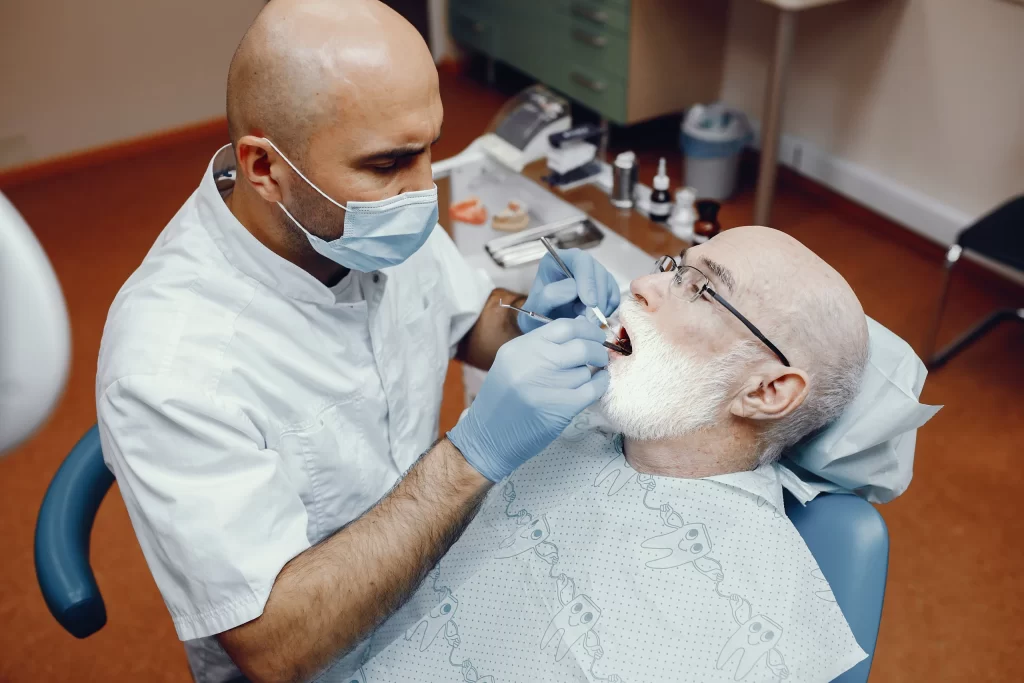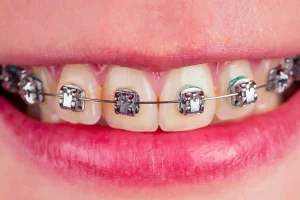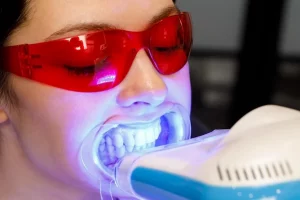Subperiosteal implants rest on bone under the gums, not in bone. They are custom titanium frameworks built for a precise fit. The frame is secured to the cortical bone with small screws. Abutments pass through soft tissue to support teeth, fixed or removable. With no intrabony drilling, load spreads across the bone surface and treatment can move faster in the right cases. For patients with limited bone, this is a practical route to stable, functional teeth for many. Read more to know about the benefits, comparison and more about subperiosteal implants.
What Are Subperiosteal Implants?
Most of us picture an endosseous implant, a screw that integrates with bone. Subperiosteal implants are different, they rest on the bone. The metal framework is designed from the patient’s anatomy, then secured, with posts emerging for the prosthesis.
That design lets you use the bone you have. It trades depth for footprint. For the right case, that solves the problem cleanly.
History of Subperiosteal Implant
These devices showed up in the 1940s and had a run through the 1980s. Positioning was imprecise, anchorage was inconsistent, complications were common. Long-term series reported only 50 to 60 percent survival at 15 years.
Endosseous implants, with reliable osseointegration, displaced them. Digital planning changed math. CBCT with CAD and CAM restored accuracy, fit, and predictability.
Benefits of Subperiosteal Implants
Use them when there isn’t enough bone for an endosteal post and grafting is not feasible or not desired. Candidates include congenitally small jaws, segmental defects after tumor surgery, and large resections with oronasal or oroantral communication.
Add severe periodontal loss, trauma, and age-related atrophy. For oncologic patients, plan after disease control and stabilization. Dr. Casease at UAB calls the versatility tremendous, and he is not wrong.
How They Compare
Endosteal implants
- Placed into bone, need adequate volume and density.
- Often require grafting first, then a wait for osseointegration.
- Usually cheaper, with smaller surgical fields.
Subperiosteal implants
- Rest on bone under the periosteum, fixed with screws.
- Frequently avoid grafting, which shortens treatment.
- Often allow immediate loading, retention is mechanical rather than biologic.
- Require wider flaps and more exposure, so pain and risk can exceed a simple endosteal case, yet still less than major grafting.
- Cost rises with custom design and lab time.
Zygomatic implants
- Anchor in the zygoma, upper jaw only.
- Long lever arm can create micromovement and stress, with soft-tissue issues.
- Unilateral use is limited, and the approach is technique sensitive with greater exposure.
- Dr. Casease and Dr. Panto report they often prefer custom subperiosteals for versatility and lower surgical drama.
Subperiosteal Implant in Dubai
Expect a custom subperiosteal case to sit in the AED 25,000–50,000 band per arch. That figure combines typical Dubai ranges, about AED 15,000–30,000 for the custom implant and AED 10,000–20,000 for surgical placement.
Final costs shift with CBCT planning, CAD/CAM work, number of abutments, anesthesia, provisional teeth, and your final material, acrylic or zirconia. Many patients avoid grafting, which shortens timelines and helps the math. We give itemized quotes after imaging and a clinical exam. Book a consultation at Oris Dental Center.
Procedure, Modern Workflow
- Start with a clinical workup and CBCT. The team designs the frame on the 3D model, often with a digital wax-up and surgical guides.
- The lab is fabricated in titanium, commonly by DMLS or 5-axis milling. Rough surfaces go where bone contact helps, polished surfaces where soft tissue must glide.
- Place under local anesthesia in most cases. Raise a full-thickness flap, seat the frame, and secure it with screws. Everything is intraoral, so no facial scars.
- Immediate provisionals are usually pre-made and screw in within minutes. Patients leave with teeth, which helps function and morale. After soft-tissue maturation and occlusal stabilization, convert to a definitive prosthesis, zirconia being a common choice.
The timeline is far shorter than staged grafting, which can run past a year.
Why You Do Not See Them Everywhere
Modern grafting works very well, so many “no-bone” patients still receive endosseous fixtures. Subperiosteals need larger flaps than a single-site endosteal case, so morbidity can be higher.
If the frame loosens under the mucosa, infection risk rises. Cost is higher due to customization and surgical time. Long-term data trails endosseal systems, so prognostic certainty is lower.
They remain a strong option for true atrophy or reconstructed segments, or when patients decline major grafts.
Where The Field Is Headed
Expect more customized, minimally invasive solutions. Current proposals favor tailored frames from CBCT, limited bone exposure, and single-step surgery.
Keep soft-tissue facing areas smooth to resist biofilm. Keep bone-contact areas rough to encourage on-growth. Zirconia is attractive for color, biocompatibility, and low bacterial adhesion.
Adjuncts such as PRF may speed healing. Micro-channel textures could improve vascularity and bone ingrowth. The line between on bone and in bone will keep blurring as design improves.
Takeaway
If a patient has severe atrophy or a segmental defect and grafting is a non-starter, a custom subperiosteal can deliver fixed teeth quickly. Screen carefully, plan digitally, and set expectations, then execute.For case reviews, referrals, or a second opinion, contact Oris Dental Center, Dubai. Book at www.orisdentalcenter.ae, or visit us in Al Khawaneej, Jumeirah, or Nad Al Sheba during posted hours.





